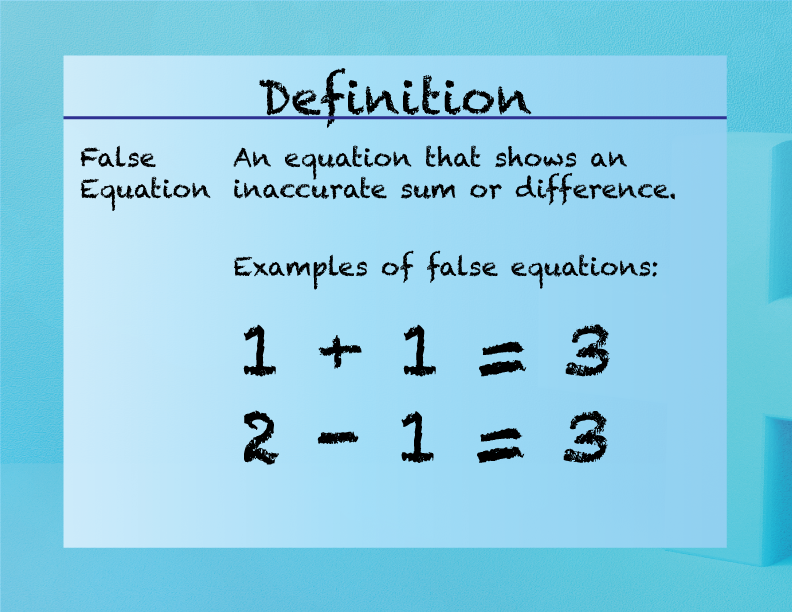
Display Title
Elementary Math Definitions--Addition Subtraction Concepts--False Equation
Display Title
False Equation

Topic
Addition and Subtraction
Definition
A false equation is a mathematical statement that shows two expressions that are not equal.
Description
A false equation is a mathematical statement where two expressions are not equal. For example, the equation
3 + 4 = 8
is false because the sum of 3 and 4 is 7, not 8. Understanding false equations helps students recognize and correct errors in their calculations.
In mathematics, identifying false equations is important for developing accuracy in arithmetic operations. It helps students understand the properties of numbers and the importance of verifying their work. Recognizing false equations also prepares students for more advanced mathematical concepts, such as algebra and calculus.
In real-world applications, identifying false equations is used in various scenarios, such as checking financial statements, verifying measurements, and more. For example, if you calculate the total cost of items and the sum does not match the expected amount, you need to identify and correct the false equation.
Teacher's Script: "Let's learn about false equations. A false equation is when two sides of a math statement are not equal. For example, if we say 3 + 4 = 8, it's not true because 3 + 4 is 7, not 8. Can you find other examples of false equations?"
For a complete collection of terms related to Addition and Subtraction click on this link: Addition and Subtraction Collection
| Common Core Standards | CCSS.MATH.CONTENT.1.OA.B.3, CCSS.MATH.CONTENT.2.NBT.B.9 |
|---|---|
| Grade Range | 1 - 3 |
| Curriculum Nodes |
Arithmetic • Addition • Addition Expressions and Equations |
| Copyright Year | 2021 |
| Keywords | addition, subtraction, equation, place value |